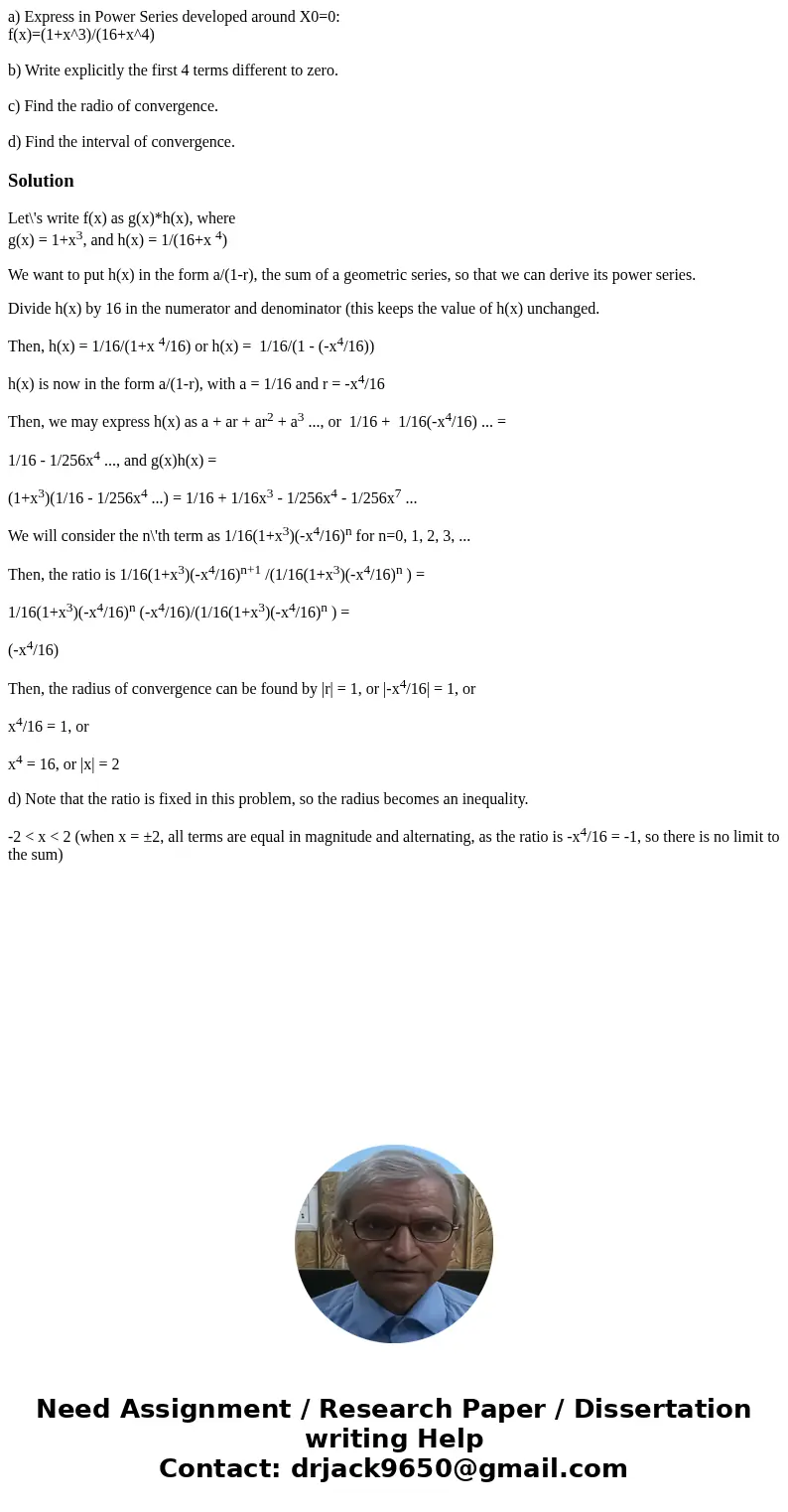a Express in Power Series developed around X00 fx1x316x4 b W
f(x)=(1+x^3)/(16+x^4)
b) Write explicitly the first 4 terms different to zero.
c) Find the radio of convergence.
d) Find the interval of convergence.
Solution
Let\'s write f(x) as g(x)*h(x), where
g(x) = 1+x3, and h(x) = 1/(16+x 4)
We want to put h(x) in the form a/(1-r), the sum of a geometric series, so that we can derive its power series.
Divide h(x) by 16 in the numerator and denominator (this keeps the value of h(x) unchanged.
Then, h(x) = 1/16/(1+x 4/16) or h(x) = 1/16/(1 - (-x4/16))
h(x) is now in the form a/(1-r), with a = 1/16 and r = -x4/16
Then, we may express h(x) as a + ar + ar2 + a3 ..., or 1/16 + 1/16(-x4/16) ... =
1/16 - 1/256x4 ..., and g(x)h(x) =
(1+x3)(1/16 - 1/256x4 ...) = 1/16 + 1/16x3 - 1/256x4 - 1/256x7 ...
We will consider the n\'th term as 1/16(1+x3)(-x4/16)n for n=0, 1, 2, 3, ...
Then, the ratio is 1/16(1+x3)(-x4/16)n+1 /(1/16(1+x3)(-x4/16)n ) =
1/16(1+x3)(-x4/16)n (-x4/16)/(1/16(1+x3)(-x4/16)n ) =
(-x4/16)
Then, the radius of convergence can be found by |r| = 1, or |-x4/16| = 1, or
x4/16 = 1, or
x4 = 16, or |x| = 2
d) Note that the ratio is fixed in this problem, so the radius becomes an inequality.
-2 < x < 2 (when x = ±2, all terms are equal in magnitude and alternating, as the ratio is -x4/16 = -1, so there is no limit to the sum)

 Homework Sourse
Homework Sourse